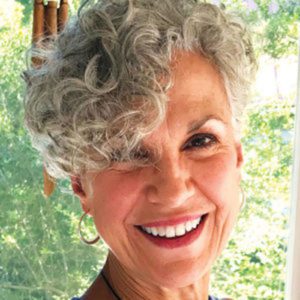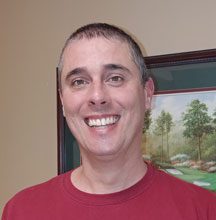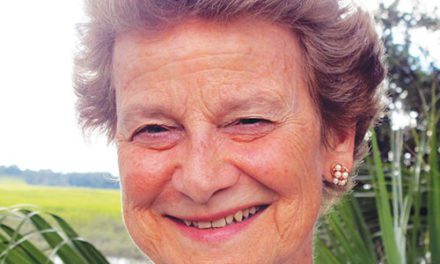
By Carolyn Jirousek
Do you ever have a day when you simply can’t get on top of things? Maybe you start the day with the best of intentions and spend 20 minutes doing the meditation that isn’t because your mind never stops wandering. To-do lists or self-defeating thoughts scroll endlessly on the dark screen behind your closed eyelids. This was me this morning, waking up with a jolt to the consequences of chronic procrastination, paperwork to sort, and a nagging muscle strain keeping me from exercising. And then for all of us, politics, COVID, hurricane season, fires, floods, and feeling the pain of the human condition pulsate in the ether.
At a more immediate and personal level, we may be faced with a need to defuse anger, fear, or stress quickly as we walk away from an upsetting conversation, stand poised at the start of an athletic event, cope with pain, or feel a traumatic memory arise. Simply imagining these stressful scenariosputs my stomach in a knot and sets my heart pounding. Just breathe, we tell ourselves, but sometimes the anxiety level inches into the red zone as our bodies mobilize for disaster in a fight or flight response. We need someone to sit us down, gently pat us on the shoulder, acknowledge how we are feeling, and say just the right things to help us relax. If such a person does not appear, and we need to put the brakes on our stress response, the Emotional Freedom Technique (EFT) is within reach in the self-care toolbox.
EFT is commonly known as tapping. Simply tune into what is bothering you by giving it a name and perform a sequence of gentle tapping with your fingertips on several acupressure spots until you feel the anxiety dissipate. When I first explored tapping for anxiety, I found that repetition of words to describe the emotion and the soothing tactile sensation calmed me down within minutes. As an antsy person who cannot sit still for any reason, tapping allowed me to move around, yet focus enough to pause, observe the emotion, and choose how to respond.
ETF is a recognized mind-body practice in the realm of Integrative Health. The National Institutes of Health (NIH) defines Integrative Medicine as bringing conventional and non-conventional approaches together to focus on health and healing of the whole person (body, mind, and spirit) rather than only physical disease and treatment. The therapies are classified by the manner in which they are delivered: nutritional (supplements, herbs, probiotics, etc.), psychological (meditation, hypnosis, music, relaxation therapies); physical (acupuncture, massage, spinal manipulation; and combinations, such as psychological and physical (Yoga, Tai Chi, EFT) or psychological and nutritional (mindful eating).
While the benefits of these therapies have been questioned in the past, they are becoming increasingly accepted and validated by science. Today, EFT has been tested in over 100 clinical trials. Papers appear in peer-reviewed medical and psychology journals, such as the Journal of Evidence-Based Integrative Medicine, showing that EFT improves physiological markers for health and is effective for relieving anxiety, depression, PTSD, pain, and phobias, as well as
enhancing athletic performance and weight management. In order to help patients, families and employees deal with stress, many hospitals now embrace Integrative Medicine. For example, Cleveland Clinic has an entire Healing Services department providing music and art therapy, reiki, massage, and aromatherapy in both inpatient and ambulatory settings.
EFT evolved during the 1980s from the work of Roger Callahan, PhD (1925-2013), a clinical psychologist, who developed Thought Field Therapy, a combination of conventional psychotherapy with traditional Chinese medicine to balance energy flow by tapping on prescribed acupressure points. In the 1990s, Gary Craig, a personal performance coach who studied under Callahan, streamlined the technique so it could be used easily by patients themselves.
In 2004, a young businessman, Nick Ortner, turned to tapping to help him with intense neck pain. Amazed by the results, he shared it with friends and family. In 2007, he produced a documentary, The Tapping Solution, featuring stories about how EFT helped people. Nick’s siblings, Alex and Jessica Ortner, joined him to make tapping accessible to a mainstream audience. In 2013 they created The Tapping Solution Foundation to support the children and their families of Newtown, CT, after the tragic shootings at Sandy Hook Elementary School. The Ortners have also been hosting a free online Tapping Summit, now in its 13th year, where leaders in the field share their knowledge and approaches to tapping across many areas, such as relationships, finance, weight management, chronic pain, and sports performance.
How does tapping work, and how do you do it? When you experience a trauma, stress, or disturbing memory, the amygdala in the brain responds with activation of the fight or flight response. Cortisol is pumped into the system to help you run from danger, but this hormone in excess can lead to health problems. Tapping on meridian points used in acupressure sends signals to the brain to relax, and cortisol levels subside. The verbal statements repeated while tapping help you to acknowledge your emotional issue as you accept yourself with compassion. Here is the technique step by step (see video at https://www.thetappingsolution.com/tapping-101/):
1) Identify the issue that is upsetting to you. Be specific. An example is anxiety over caring for an elderly parent.
2) Rate the intensity of the emotion on a scale of 1 (least) to 10 (worst).
3) Compose a set up statement to repeat aloud or in your head as you tap. The purpose of the statement is to acknowledge how you feel, and at the same time accept yourself and your feelings. For example, “Even though I feel anxious about caregiving for Mom, I deeply and completely accept myself.”
4) Begin the tapping sequence by repeating the set up statement three times as you tap the side of one hand beneath your pinkie finger (karate chop spot). Then, repeat a reminder phrase at each of the following tapping points to keep the focus on the emotion: “I feel anxious about caregiving.” Tap 5-7 times gently with your fingertips at each of these points with one or both hands, repeating the cycle three times:
edges of your eyebrows over your nose
outside corner of your eyes on the bone
under your nose
under your lower lip
under your collarbones
four inches under your armpit
top of head
5) After three cycles, which takes about three minutes, rate the intensity of the emotion to see if it has decreased. Repeat the cycle if needed.
The technique is simple. A web search for tapping and EFT will bring up many websites, videos, apps, and books with visual aids and scripts. Many things in life can set off surges of emotion, from unpleasant twinges to debilitating states of fear. Tapping is a way we can help ourselves get through a difficult situation or achieve a goal.
At this time, EFT is not a regulated modality requiring licensure, but certification programs exist for mental health practitioners, health care professionals, and anyone interested in studying the technique in depth and sharing with others. I encourage you to follow a guided tapping session online, or try it if you feel a surge of impatience when you are stopped in traffic at the swing bridge downtown. Give yourself the chance to tap and bring a little more balance and tranquility into your life.
Links to information on EFT technique, research, and certification presented in this article:
National Center for Complementary and Integrative Health: www.nccih.nih.gov
Journal of Evidence-Based Integrative Medicine:https://www.ncbi.nlm.nih.gov/pmc/articles/PMC6381429/pdf/10.1177_2515690X18823691.pdf
EFT Universe: https://www.eftuniverse.com/
The Tapping Solution: https://www.thetappingsolution.com/
Thought Field Therapy: https://tfttapping.com/
Carolyn Jirousek grew up in Cleveland, Ohio. She and her husband, Bill, divide their time between Cleveland and Beaufort, enjoying the best of both worlds. She is a Reiki Practitioner, Registered Nurse with a Masters Degree in Art History, Master Naturalist, and volunteer in both North and South with several non-profit organizations.








